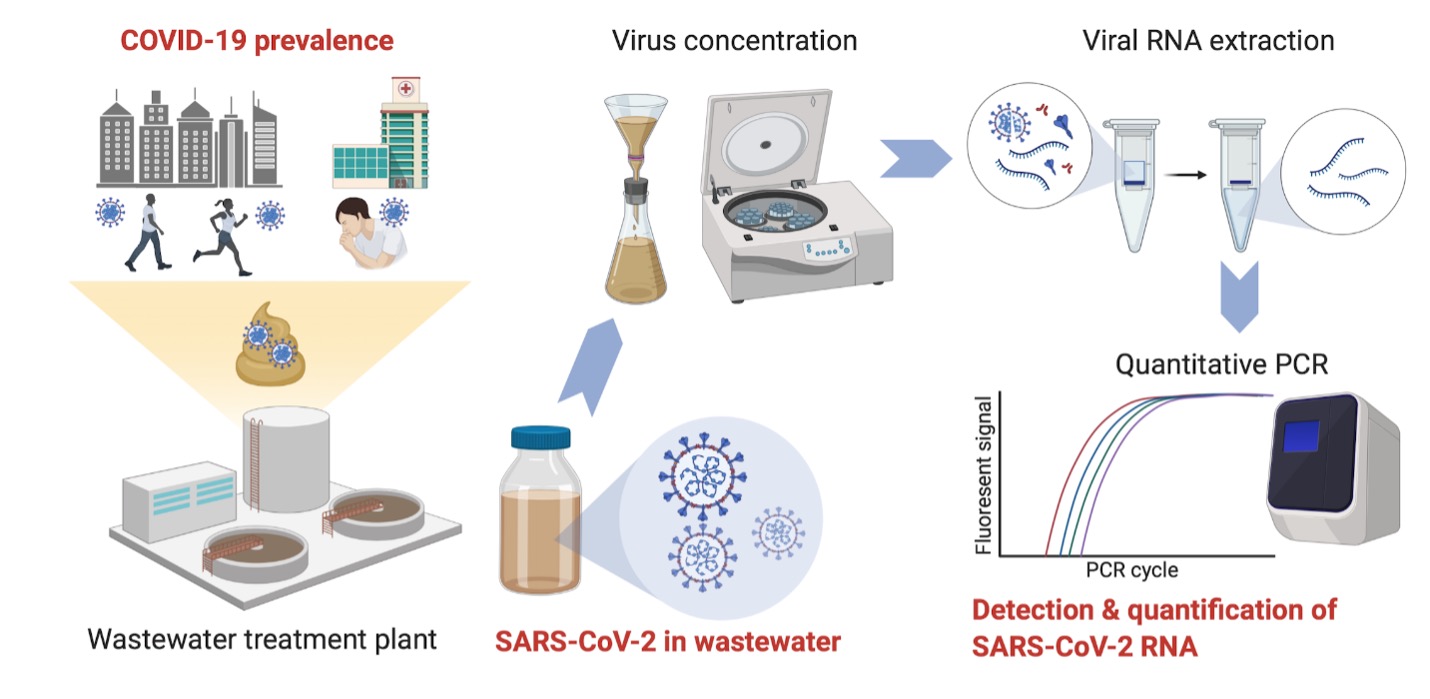Registration services will be closed on Monday, Dec 15th at 11:59 PM and will reopen on Wednesday, Dec 17th, at 12:01 AM. This pause is necessary to ensure data integrity during Canvas roster maintenance.
Center of Research Excellence in Wastewater-Based Epidemiology
Aims

Figure: Wastewater based epidemiology
Aim 1. To determine if the virus concentration (SARS-CoV-2, influenza, RSV, mpox and other emerging pathogens) in wastewater correlates with community transmission in high-risk areas.
Aim 2. To develop and validate predictive models for disease infection prevalence based on detection in wastewater.
We will construct, analyze, and simulate a mathematical model for the transport, diffusion, and persistence of the targeted virus in wastewater as it moves through sewer systems. This transport model will be coupled with a disease transmission model for human-to-human transmission through contacts, aerosols, and fomites. The models will help guide public health workers to prioritize mitigation efforts to control an outbreak by quantifying their effectiveness. We will also construct the AI model by using the state-of-the-art Deep Neural Network (DNN) modeling method. Specifically, we will use a Recurrent Neural Network (RNN)-based DNN architecture to describe the dependence of SARS-CoV-2 spread in neighborhoods on antecedent concentrations of viruses in wastewater.

These studies will help address the gap in understanding the potential of WBE in mitigating and combating the pandemic. The mathematical and AI modeling will create a framework to analyze the data, identify the relative importance of the different data that can be collected, and quantify the impact of different public health efforts in controlling an outbreak. The results of this project will support future applications of WBE for surveillance and control of diseases. Our team has the experience and expertise in environmental virology, clinical infectious disease research, molecular genetics, engineering, epidemiology, and predictive modeling to accomplish these goals.

Contact Information
For Further Information:
Samendra Sherchan, Ph.D.
Department of Biology
Office: McMechen Hall 116
Phone: (443) 885-2374
samendra.sherchan@morgan.edu
Contact Information
For Further Information:
Samendra Sherchan, Ph.D.
Department of Biology
Office: McMechen Hall 116
Phone: (443) 885-2374
samendra.sherchan@morgan.edu

